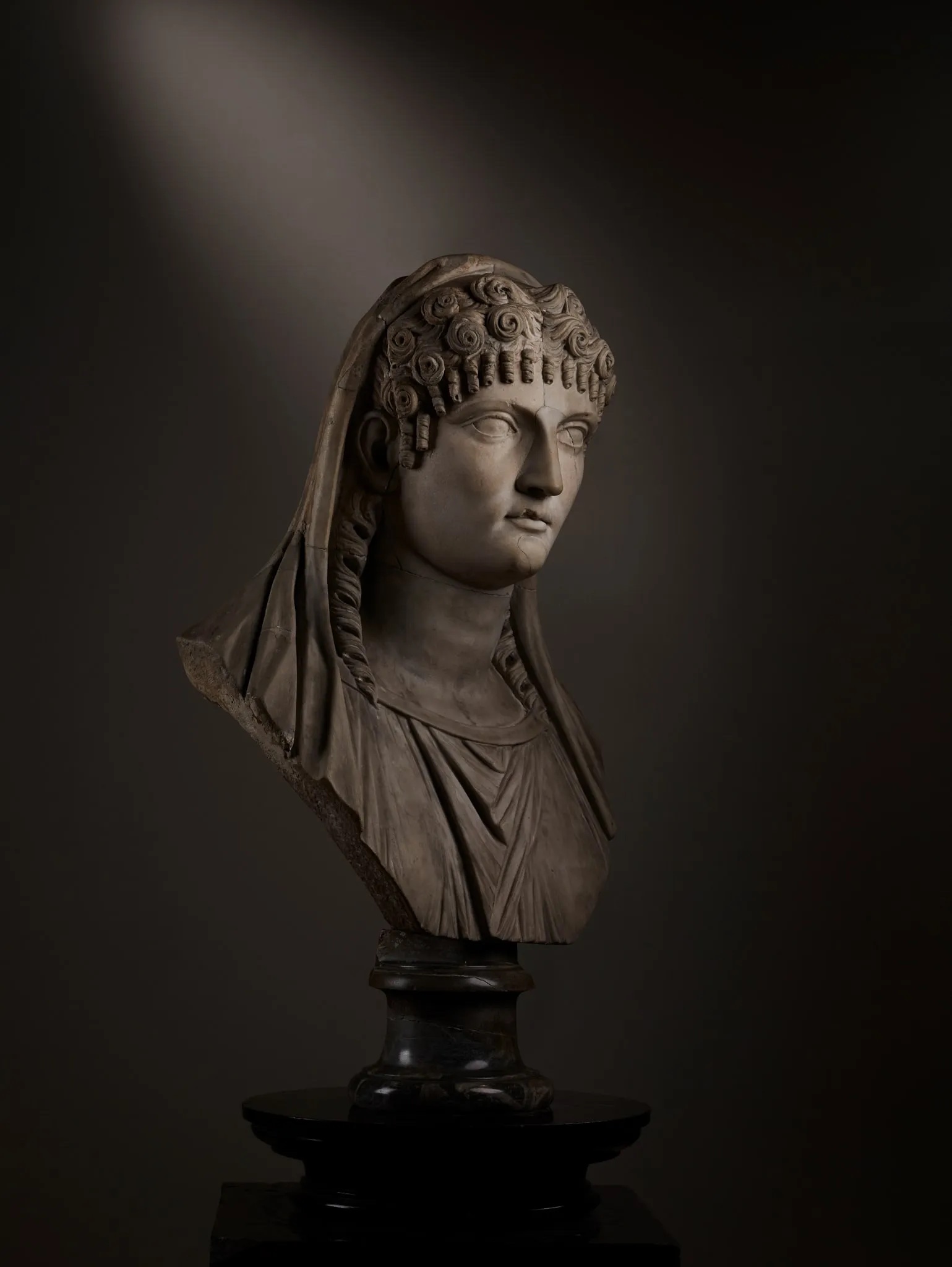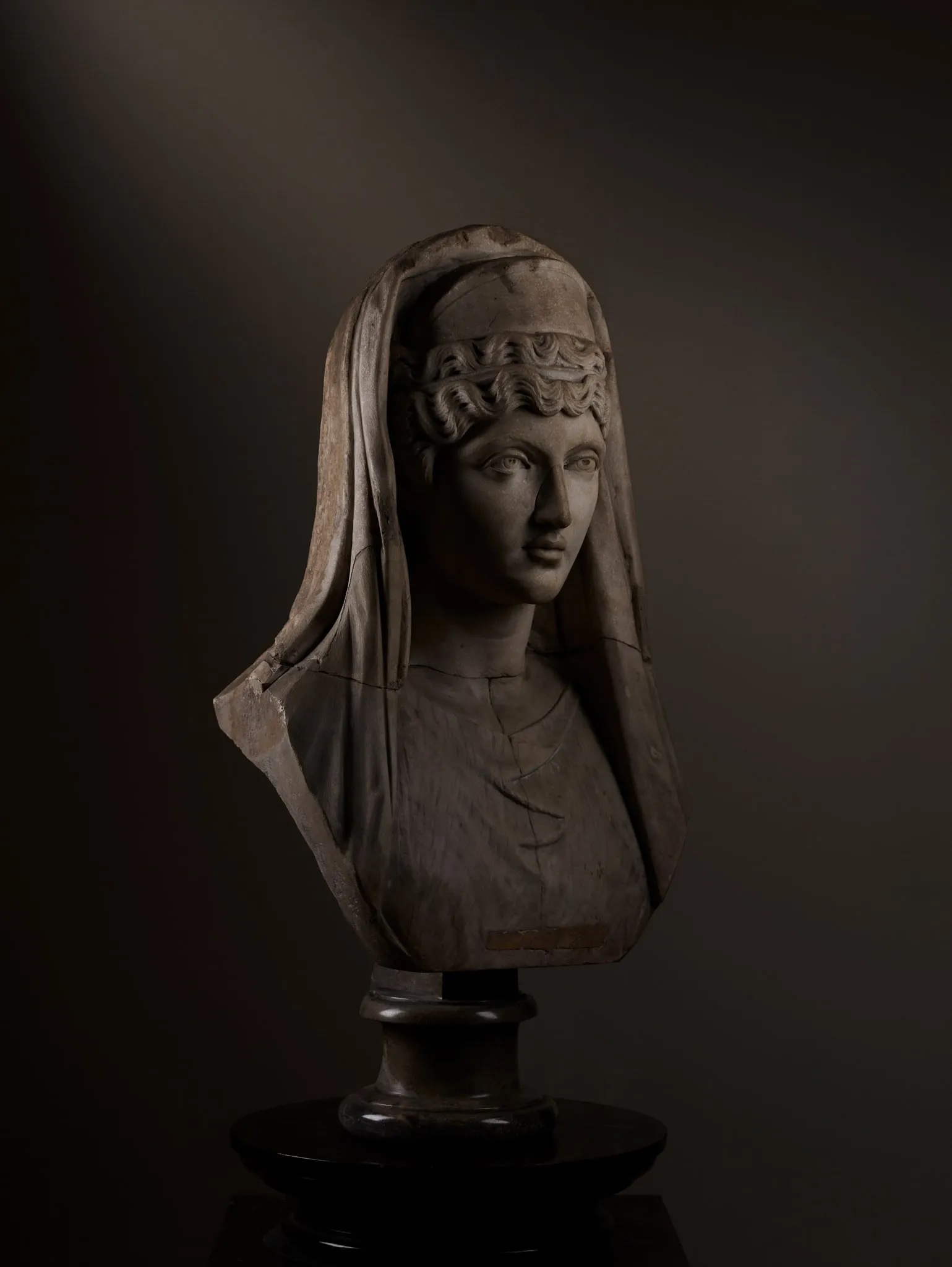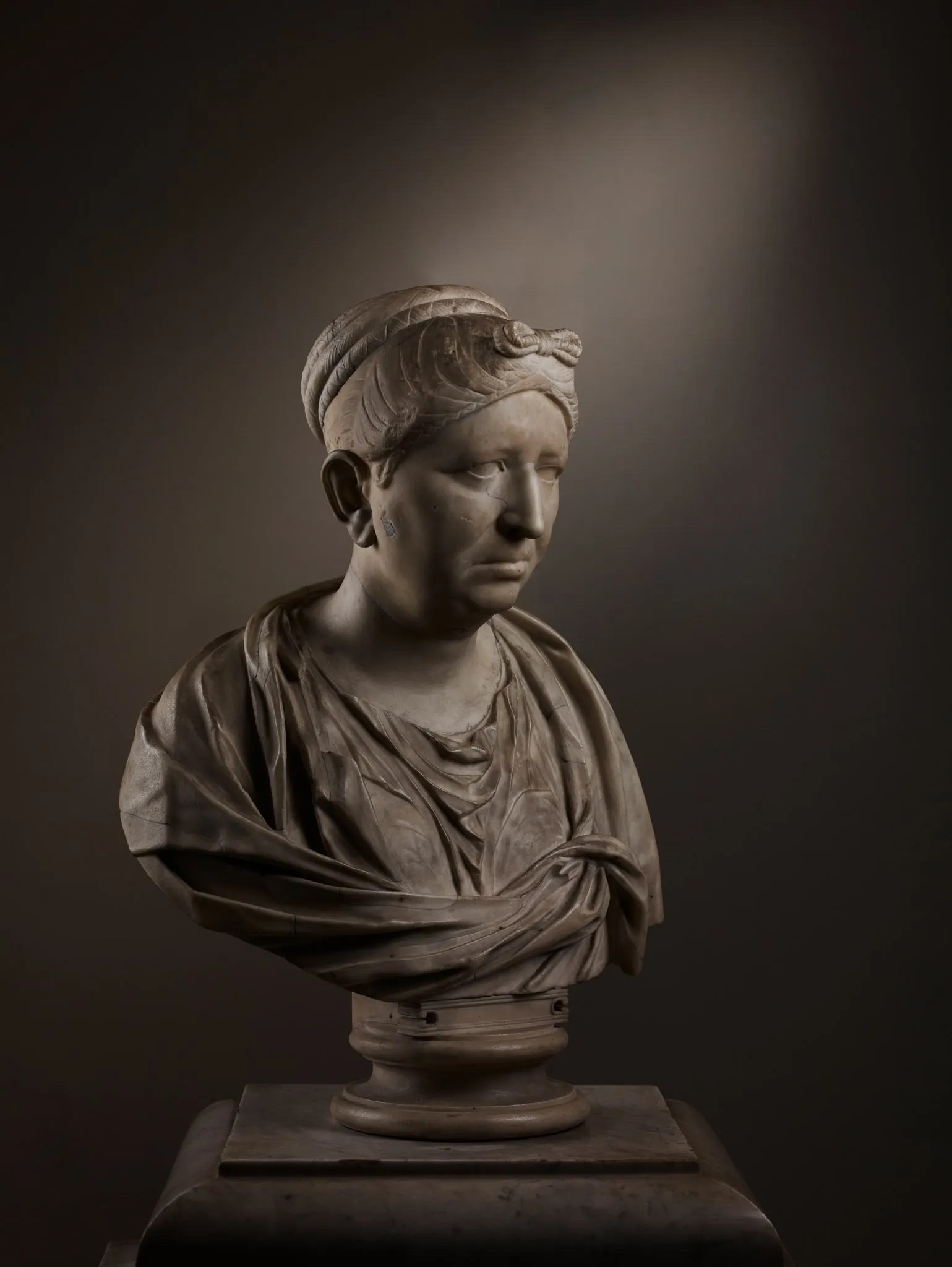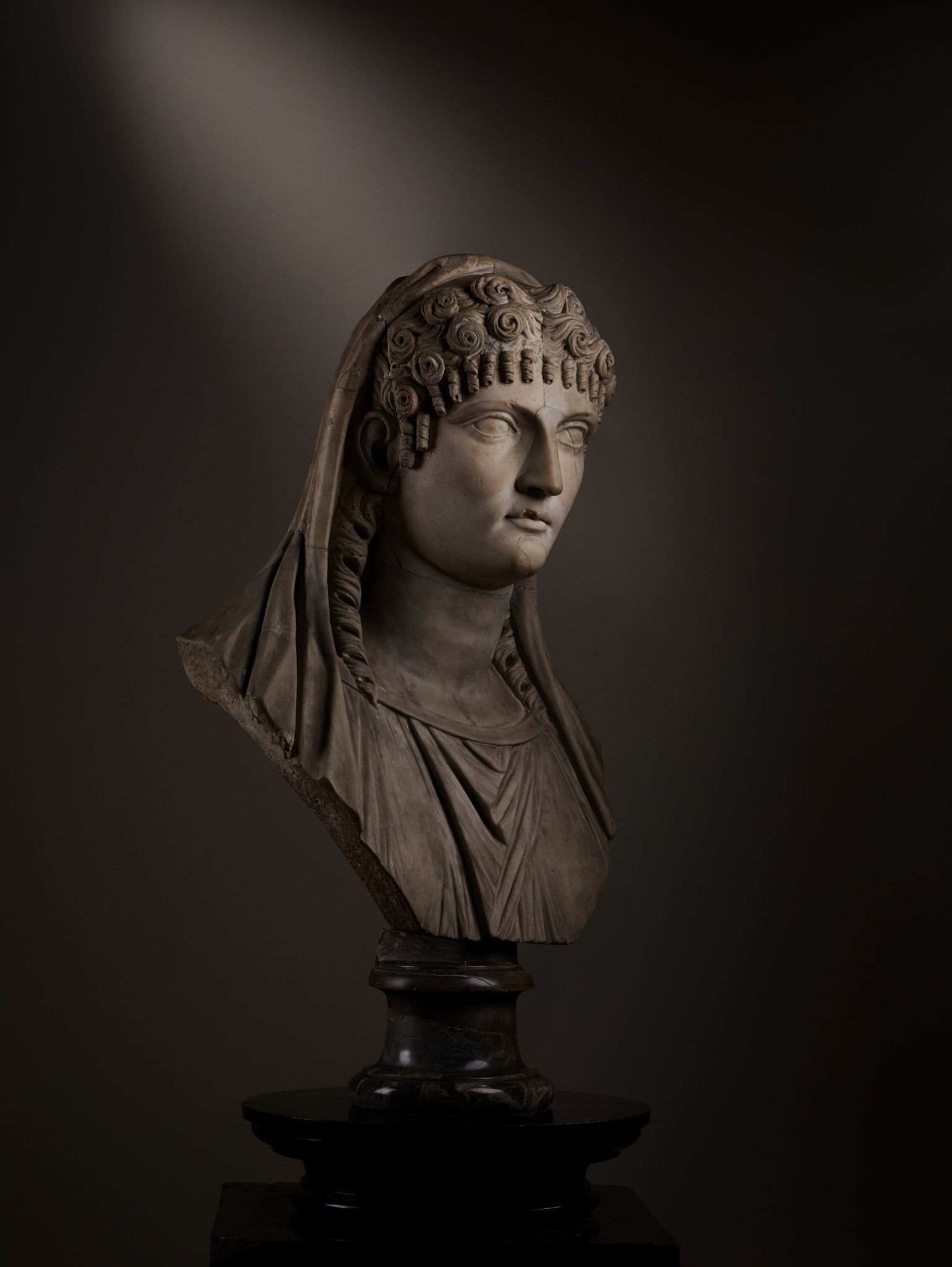GREENFORD, UK – Three larger-than-life-size Roman portrait busts with an 18th-century provenance linked to Cobham Hall in Kent, England have sold for a combined £1.26 million ($1.59 million) at Lyon & Turnbull.
The trio of massive second century marble heads all sold to the same determined phone bidder as part of the Edinburgh and London firm’s first designated sale of Classical Ancient Art on March 21. Results can be seen at LiveAuctioneers.
The sculptures were previously owned by John Bligh, 4th Earl of Darnley (1767-1831), the Lord of the Manor of Cobham. A noted amateur cricketer who made at least 27 appearances in first-class cricket matches between 1789 and 1796, he employed the architect James Wyatt to remodel the interiors at Cobham Hall.
The sculptures, each now housed on 19th-century stands, remained in situ until the house changed hands in 1957. They were part of a sale held by Sotheby’s in London in July of that year.
As with the best Roman sculpture, these were pieces that combined huge decorative appeal with academic clout.
In chronological order and setting the pace when it hammered at £600,000 ($767,360) and sold for £780,000 ($988,120) against an estimate of £25,000-£35,000 ($31,670-$44,340) was a 3ft 3in (97cm) bust of Pompeia Plotina dating to circa 110-120 AD. Born around 70 AD, she assumed the role of empress consort when Trajan rose through the ranks of the Roman military to become emperor in 98 AD.
Although she eschewed many of the trappings of power and luxury often associated with imperial life, she is shown in the bust as an idealized beauty with an elaborate coiffure and corkscrew fringe and a palla draped over the back of her head and over her shoulders. There had been huge interest around the £100,000 mark, but two phone bidders and a bidder online tussled as the competition reached the end game.
Trajan was conservative in nature, and Trajanic portrait sculpture was idealized to accentuate Roman virtues. With changing artistic sensibilities and philosophical trends, far more naturalism emerged during the reign of his successor, Hadrian. This is observed in a sensitively rendered bust of an older aristocratic lady of the middle Hadrianic period, dating to circa 125-130 AD. That sculpture was estimated at £20,000-£30,000 ($25,335-$38,005), hammered for £160,000 ($204,630) and sold for £209,600 ($265,470) with buyer’s premium.
In 138 AD Antoninus Pius would succeed Hadrian as emperor, and his wife Faustina the Elder was granted the title of Augusta by the Senate. A highly idealized and rejuvenated image of the empress in the guise of the goddess Hera, dated to around 135-140 AD, was estimated at £25,000-£35,000 ($31,670-$44,340), but as with the Pompeia Plotina bust, it hammered for £600,000 ($767,360) and sold for £780,000 ($988,120) with buyer’s premium.
“Three monumental sculptures with monumental prices to boot,” said Gavin Strang, auctioneer on the day. The winning bidder of all three lots was described as an international buyer.

Roman Trajanic marble bust of Pompeia Plotina, which hammered for £600,000 ($767,360) and sold for £780,000 ($988,120) with buyer’s premium at Lyon & Turnbull.

Roman Antonine marble bust of Faustina the Elder, which hammered for £600,000 ($767,360) and sold for £780,000 ($988,120) with buyer’s premium at Lyon & Turnbull.

Roman Hadrianic marble bust of a lady, which hammered for £160,000 ($204,630) and sold for £209,600 ($265,470) with buyer’s premium at Lyon & Turnbull.


